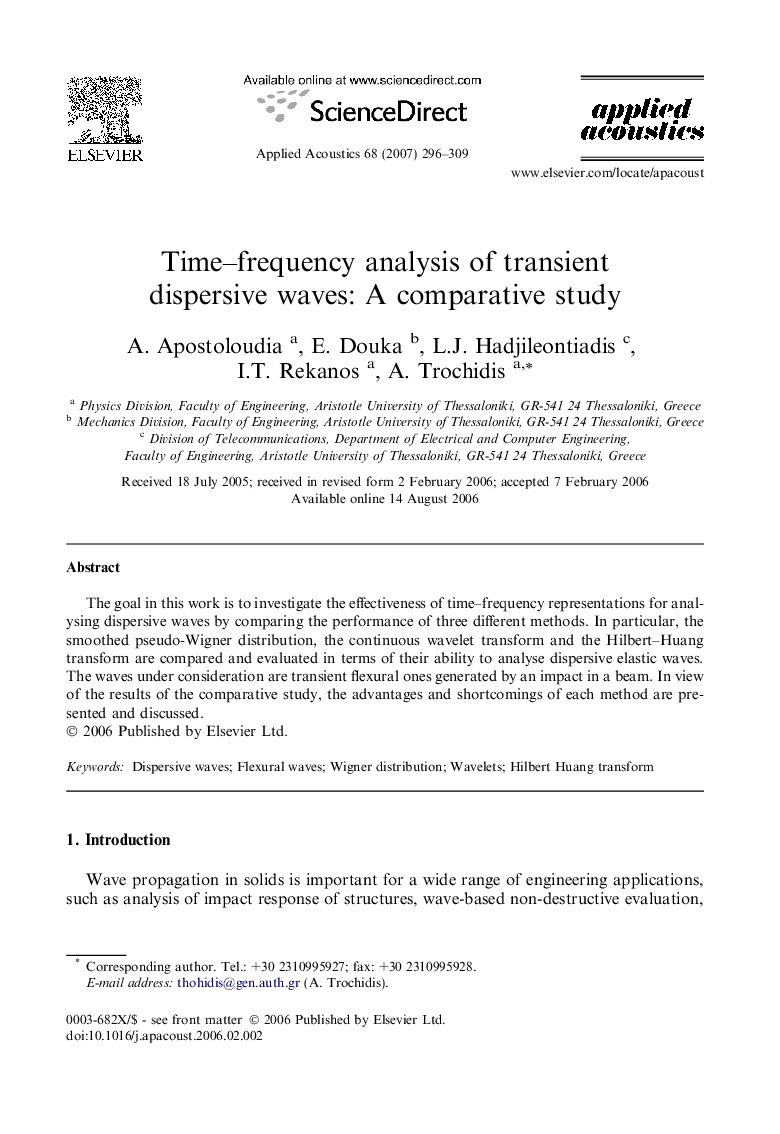| Article ID | Journal | Published Year | Pages | File Type |
|---|---|---|---|---|
| 753815 | Applied Acoustics | 2007 | 14 Pages |
Abstract
The goal in this work is to investigate the effectiveness of time–frequency representations for analysing dispersive waves by comparing the performance of three different methods. In particular, the smoothed pseudo-Wigner distribution, the continuous wavelet transform and the Hilbert–Huang transform are compared and evaluated in terms of their ability to analyse dispersive elastic waves. The waves under consideration are transient flexural ones generated by an impact in a beam. In view of the results of the comparative study, the advantages and shortcomings of each method are presented and discussed.
Related Topics
Physical Sciences and Engineering
Engineering
Mechanical Engineering
Authors
A. Apostoloudia, E. Douka, L.J. Hadjileontiadis, I.T. Rekanos, A. Trochidis,
